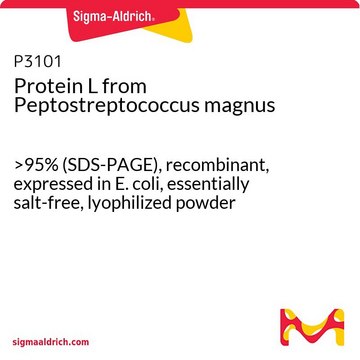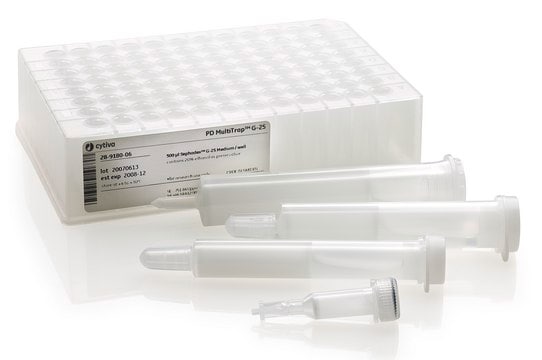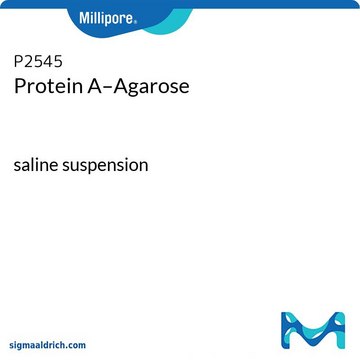Key Documents
P3351
Protein L–Agarose from Peptostreptococcus magnus
recombinant, expressed in E. coli
About This Item
Polecane produkty
rekombinowane
expressed in E. coli
Poziom jakości
macierz
6% beaded agarose supplied as 50% slurry
aktywacja macierzy
cyanogen bromide
MAR
amino
pojemność
3-10 mg/mL binding capacity
temp. przechowywania
2-8°C
Zastosowanie
Uwaga dotycząca przygotowania
Kod klasy składowania
3 - Flammable liquids
Klasa zagrożenia wodnego (WGK)
WGK 2
Temperatura zapłonu (°F)
Not applicable
Temperatura zapłonu (°C)
Not applicable
Certyfikaty analizy (CoA)
Poszukaj Certyfikaty analizy (CoA), wpisując numer partii/serii produktów. Numery serii i partii można znaleźć na etykiecie produktu po słowach „seria” lub „partia”.
Masz już ten produkt?
Dokumenty związane z niedawno zakupionymi produktami zostały zamieszczone w Bibliotece dokumentów.
Klienci oglądali również te produkty
Protokoły
To determine the molecular weights of protein antigens, to study protein/protein interactions, to determine specific enzymatic activity, to monitor protein post-translational modifications and to determine the presence and quantity of proteins.
Techniki określania masy cząsteczkowej antygenu białkowego, interakcji białkowych, aktywności enzymatycznej i modyfikacji potranslacyjnych.
Nasz zespół naukowców ma doświadczenie we wszystkich obszarach badań, w tym w naukach przyrodniczych, materiałoznawstwie, syntezie chemicznej, chromatografii, analityce i wielu innych dziedzinach.
Skontaktuj się z zespołem ds. pomocy technicznej













